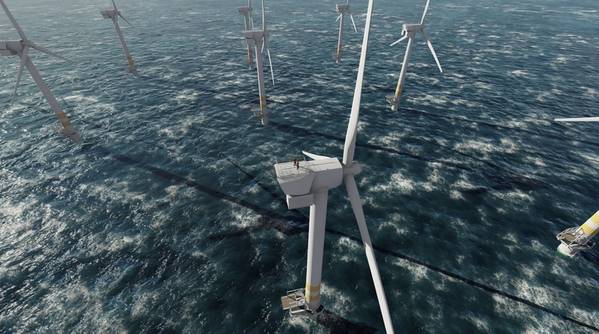
The UK offshore wind industry could create more than 69,800 jobs by 2026, a significant increase compared to today's 26,000, according to research published by the Offshore Wind Industry Council (OWIC).
According to OWIC, most of the jobs will be created in parts of the country "which urgently need leveling up," including the northeast of England, Yorkshire and The Humber, East Anglia, and Scotland.
OWIC says the private sector will invest £60.8bn billion (~$83,29 billion) across the UK over the next five years in developing, constructing and operating offshore wind projects.
The average annual investment will be £10.1bn between 2021 and 2026, and investment in 2026 alone will reach a peak of £10.6bn.
OWIC said its survey is "by far the most comprehensive ever conducted in the UK" into the full extent of the economic benefits of offshore wind. For the first time, it includes direct and indirect jobs as well as self-employed people who make up 14% of the total workforce.
Of the 69,848 jobs by 2026, 40,700 will be direct (nearly 60%), and 29,148 will be indirect (in companies supplying other industries as well as offshore wind).
The highest percentage of responses came from supply chain companies (39%), reflecting the importance of the UK offshore wind supply chain in job creation. 29% came from offshore wind farm developers and operators. 27% were from UK companies involved in manufacturing specialist products for the sector (Original Equipment Manufacturers or OEMs).
Over 80% of offshore wind jobs are currently located outside London and the southeast. Scotland currently has the highest proportion (30%), Yorkshire and The Humber has 15%, the northeast of England 10%, and the East of England also has 10%.
"Our forecast shows that regional percentages will be maintained at this level as jobs increase over the course of this decade, providing sustained long-term growth in these areas," OWIC said.
Engineers, Technicians, Welders...
The wide range of jobs includes engineers, project managers, software designers, component manufactures, turbine technicians, welders, deep sea divers, boat crews and helicopter pilots. 79% of these jobs are highly skilled, technical and management roles. Apprenticeships make up 1.8% of the UK workforce, half of which are in Yorkshire and the Humber. The industry has committed to raising this to 2.5% as soon as possible.
The offshore wind industry is looking in particular to fill vacancies for electrical engineers, civil engineers, project managers, surveyors, data analysts and digital specialists in roles based onshore as well as offshore, OWIC said.
Currently, women make up 18% of the workforce, and the industry has committed to increasing this to at least one-third by 2030 – and to reach a stretch target of 40% if possible, OWIC added.
"The survey also shows that the industry currently offers a well-balanced range of opportunities for people with skills and qualifications at every level, from GCSEs and A-levels to Higher Education Certificates and Diplomas and university degrees. 71% of the workforce have qualifications in Higher Education (i.e. higher than A-levels or their equivalent in BTECs)," OWIC said.
The Industry Chair of OWIC Danielle Lane, UK Country Manager for Vattenfall, said: “The UK offshore wind industry employs thousands of people in parts of the country which other sectors fail to reach and which need leveling up the most. This month GE Renewable Energy announced that it will open a massive offshore wind turbine blade manufacturing plant on Teesside, transforming a former steelworks site into a high-tech clean energy powerhouse and boosting our innovative UK supply chain.
“We offer opportunities to people from all backgrounds and with qualifications at every level to work in an industry which is playing a crucial role in tackling dangerous climate change, enabling us to meet the Government’s net zero emissions target as fast as possible."
RenewableUK’s Deputy Chief Executive Melanie Onn, who leads on OWIC’s People and Skills work, said: “We’ll see a surge of tens of thousands of new jobs over the next five years as offshore wind will put the rocket boosters under the UK’s green economic recovery. By investing over £60 billion of private capital between now and 2026, this industry is helping to kickstart our economy after the pandemic”.
"Renewables are creating opportunities for people across the UK, from school-leavers and graduates to workers leaving fossil fuel industries, and we want to ensure the right training and support is in place to harness all the talent and expertise we'll need in the transition to clean energy".